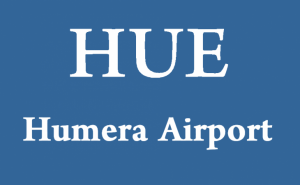Blog Archives
S
"SDRA" stands for "Sustainable Development and Resilience Assessment." It represents a comprehensive approach to evaluating and promoting sustainable development practices and resilience-building efforts within communities, organizations, and regions. SDRA encompasses a range of assessment tools, methodologies, and frameworks designed to measure and analyze various dimensions of sustainability, including environmental, social, economic, and institutional factors. The goal of SDRA is to identify strengths, weaknesses, opportunities, and threats related to sustainable development and resilience, enabling stakeholders to make informed decisions and take targeted actions to enhance sustainability and resilience outcomes. This process often involves gathering data, conducting analyses, engaging stakeholders, and developing strategies and action plans to address identified challenges and leverage existing assets and capacities. SDRA is particularly relevant in the context of global challenges such as climate change, natural disasters, poverty, inequality, and resource depletion, where building resilience and promoting sustainable development are essential for ensuring the well-being and prosperity of current and future generations. By integrating sustainability and resilience considerations into planning, policy-making, and decision-making processes, SDRA helps foster more inclusive, equitable, and resilient societies that can adapt and thrive in the face of evolving challenges and uncertainties.
"SVCIC" stands for "Socially Vulnerable Children in Conflict." It represents a demographic group of children who are particularly susceptible to the negative impacts of conflict and violence within society. These children often come from marginalized communities, impoverished backgrounds, or areas affected by armed conflict, civil unrest, or humanitarian crises. SVCIC face a myriad of challenges including displacement, loss of family members, trauma, physical and psychological harm, lack of access to education and healthcare, and increased risk of exploitation, abuse, and recruitment into armed groups. They are among the most vulnerable and marginalized members of society, facing systemic barriers that hinder their ability to thrive and reach their full potential. Addressing the needs of SVCIC requires a comprehensive and multidimensional approach that encompasses protection, humanitarian assistance, psychosocial support, education, healthcare, and community empowerment initiatives. By prioritizing the well-being and rights of SVCIC, governments, humanitarian organizations, and communities can mitigate the long-term impacts of conflict and violence, promote resilience and recovery, and ensure that all children have the opportunity to grow up in safe, nurturing environments where they can flourish and contribute positively to society.
"SWYW" stands for "Say What You Want." It encapsulates a philosophy or approach to communication that emphasizes the importance of expressing one's thoughts, opinions, and desires openly and honestly. In a world where communication can often be filtered, censored, or constrained by social norms and expectations, SWYW encourages individuals to assert their voice and communicate authentically without fear of judgment or repercussion. This approach promotes self-expression, empowerment, and authenticity in interpersonal interactions, allowing individuals to assert their needs and boundaries, express their feelings and emotions, and advocate for their beliefs and values. By embracing SWYW, individuals can cultivate more meaningful and genuine relationships, foster mutual understanding and respect, and create environments where open and honest communication thrives. However, it's essential to balance the principles of SWYW with sensitivity and empathy, considering the impact of our words on others and being mindful of the context and dynamics of each communication exchange. Ultimately, SWYW promotes a culture of transparency, authenticity, and empowerment, where individuals feel confident and empowered to speak their truth and assert their agency in all aspects of life.
"SCJH" stands for "Sustainable Community-based Jute Handicrafts." This term represents a multifaceted approach to economic development and sustainability centered around the production and promotion of jute-based handicrafts within local communities. Jute, a versatile and eco-friendly natural fiber, is used to create a wide range of handicraft products such as bags, rugs, home decor items, and accessories. The SCJH initiative focuses on empowering local artisans and promoting entrepreneurship by providing training, resources, and market access to individuals and groups involved in jute handicraft production. By leveraging traditional craftsmanship techniques and incorporating modern design elements, SCJH aims to create high-quality, marketable products that appeal to both domestic and international consumers. Additionally, SCJH places a strong emphasis on sustainability, promoting eco-friendly production practices, responsible sourcing of materials, and fair trade principles to ensure the long-term viability of jute-based handicraft industries. Through collaboration with government agencies, NGOs, and private sector partners, SCJH seeks to foster economic growth, job creation, and community resilience in jute-producing regions while also contributing to environmental conservation and cultural preservation. Overall, SCJH represents a holistic approach to sustainable development that harnesses the potential of jute handicrafts to empower communities, preserve cultural heritage, and promote environmental stewardship.
"SYSMON" stands for "System Monitor." It is a software utility or tool designed to monitor and log various activities and events occurring within a computer system or network. SYSMON operates in the background, continuously collecting and analyzing data related to system processes, file modifications, network connections, registry changes, and other system-level activities. The primary purpose of SYSMON is to provide administrators and security professionals with visibility into the behavior of their systems, helping them detect and investigate potential security incidents, anomalies, or unauthorized activities. By monitoring critical system components and tracking changes in real-time, SYSMON helps identify indicators of compromise, malware infections, or suspicious behavior that may indicate a security breach or unauthorized access. Additionally, SYSMON can generate detailed logs and reports, enabling forensic analysis, incident response, and compliance monitoring. Many organizations integrate SYSMON into their cybersecurity posture as part of a broader strategy to enhance threat detection, incident response capabilities, and overall system security. However, it's essential to configure and deploy SYSMON effectively, ensuring that it captures relevant data without overwhelming system resources or compromising performance. Overall, SYSMON plays a vital role in maintaining the integrity, security, and reliability of computer systems and networks by providing continuous monitoring and insight into system activity.







